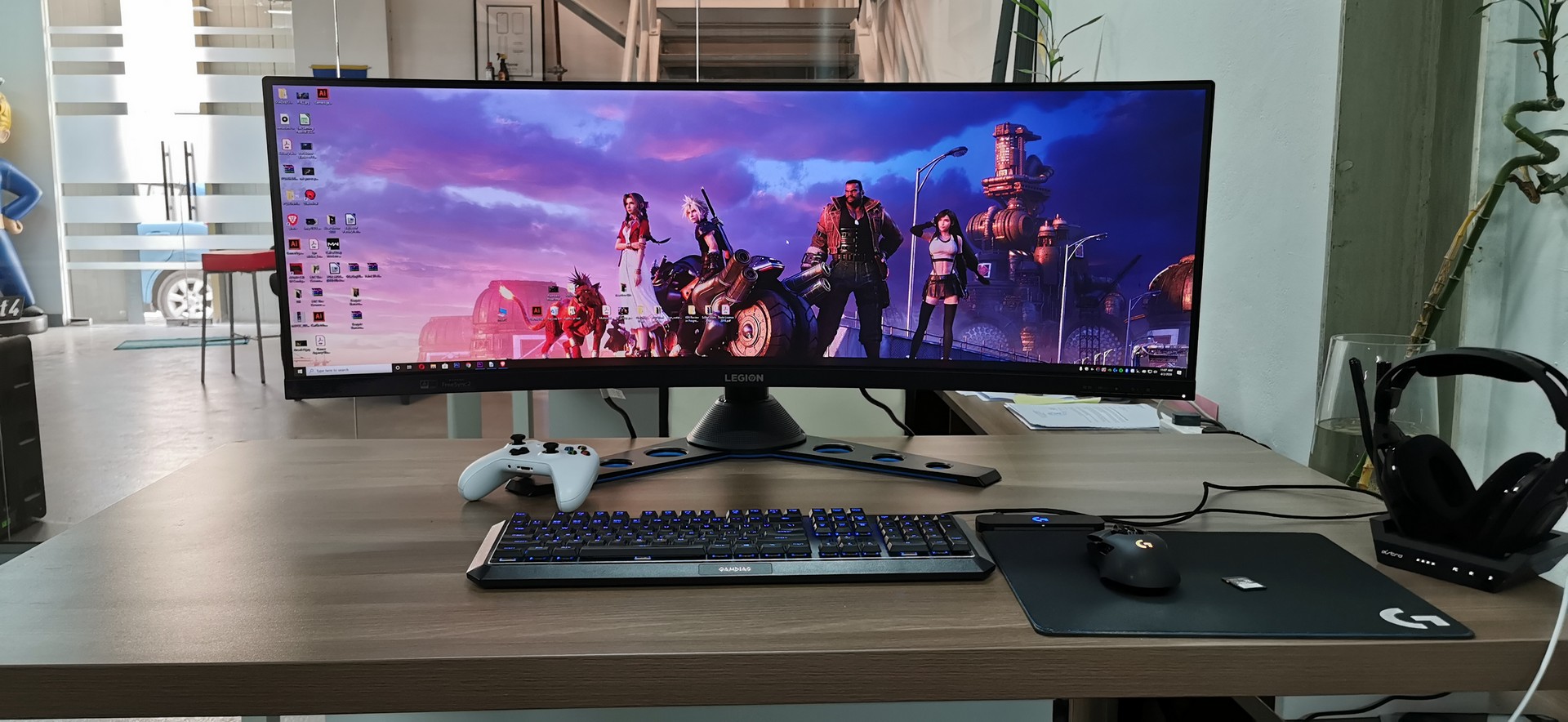TechRadar Verdict
The Lenovo Legion Y44w-10 has beefy specs, but they do not necessarily translate into actual performance. The monitor is let down by a subpar VA panel that is plagued with purple fringing issues due to over-sharpness, and a weak color range that will require significant re-tooling to produce an accurate image quality.
Pros
- +
Great design and build quality
- +
Great specs
Cons
- -
Not the best VA panel
- -
Weak color production
- -
HDR400 is simply a buzzword
Why you can trust TechRadar
Ultra-wide gaming monitors are slowly catching flavor with gamers, as an increasing number of games have started to support the format. And why not – an ultra-wide gaming monitor truly provides an unparalleled immersive experience that more than makes up for some of the shortcomings of the device.
But finding the right ultra-wide monitor is key, especially considering the cost at which they come at. Lenovo is hoping that their new 43” monitor, the Legion Y44w-10, would fit that bill and it certainly has the specs to lay claim to that. It sports a 3840x1200 VA panel (which is essentially two 1920x1200 panels stuck side by side), 144Hz refresh rate, AMD FreeSync 2 support (and some NVIDIA G-sync compatibility), a detachable Harmon Kardon speaker, and enough ports to power any gaming setup.
But does the impressive spec sheet translate into actual performance? Sadly, not quite.
Design
The Y44w-10 is a behemoth of a screen at 43”, so it will naturally take up a lot of space on your desk. While setting up, we had to clear our entire desk to support the screen, so some concessions will have to made if you want to rock this on your setup.
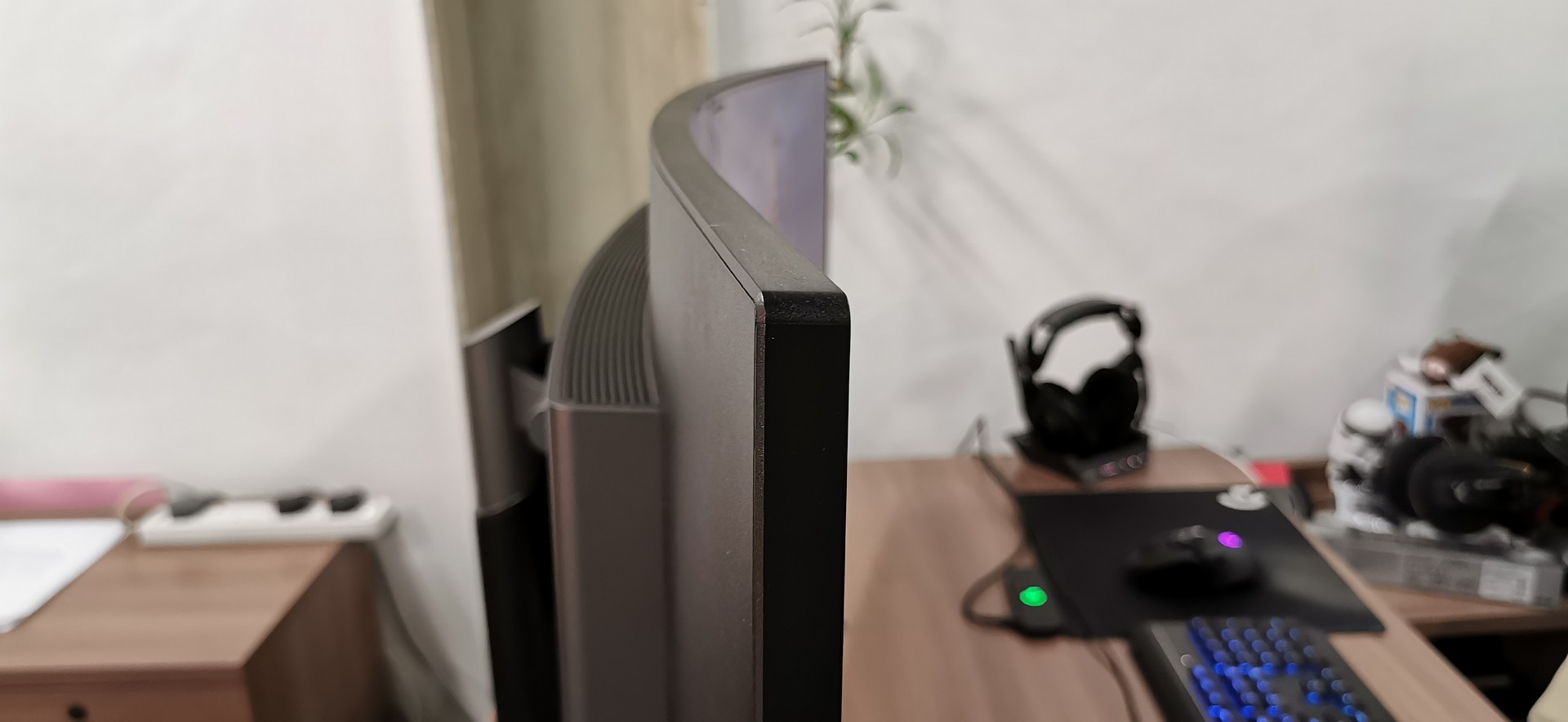
Aesthetic-wise the Y44w-10 is a fine-looking gaming monitor. The slender, 1800R curved screen lends well to its appeal, and the restraint in not going overboard with garish colors and RGB lighting gives the screen a sophisticated look. The honeycomb design on the back is also a nice touch.
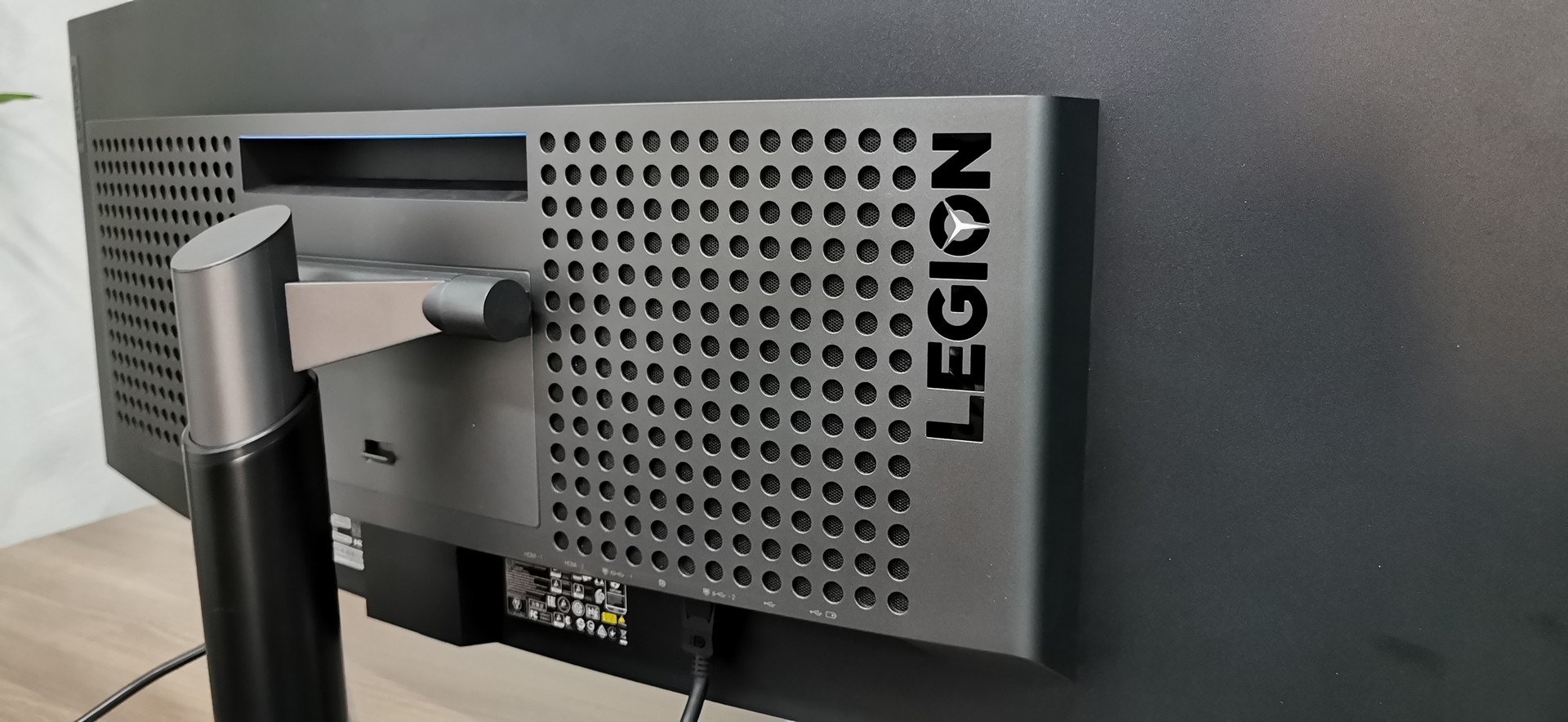
The display is flanked with a 3-side borderless design with a thin 2mm plastic edge along the sides and top. The bottom bezel is slightly chunky and houses a muted ‘Legion’ logo, along with the on-screen display (OSD) buttons on the bottom right side.
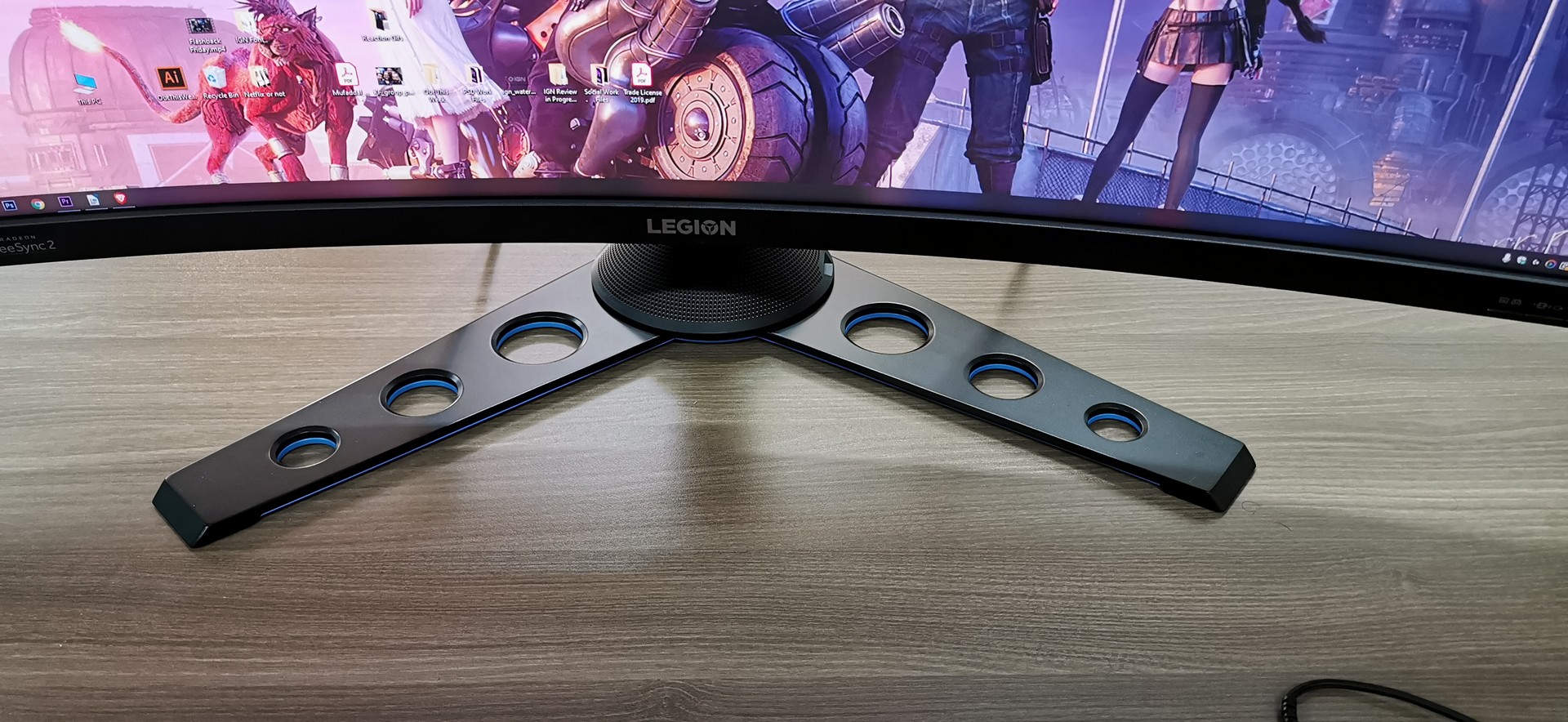
The hefty V-stand imposes a large footprint on the desk and provides some basic ergonomic functionality such as tilt, swivel and lift. It doesn’t allow you to pivot the screen, but considering the size, that wouldn’t be very wise.
We’re not huge fans of the circular indents on the stand, as they serve no purpose other than adding an unnecessary design element to it. You could probably put a few coins or memory cards in them, so it could come of some practical use, we suppose. What we do like are the blue accents around the V-shape which adds a splash of color – but not too much - to the overall look.
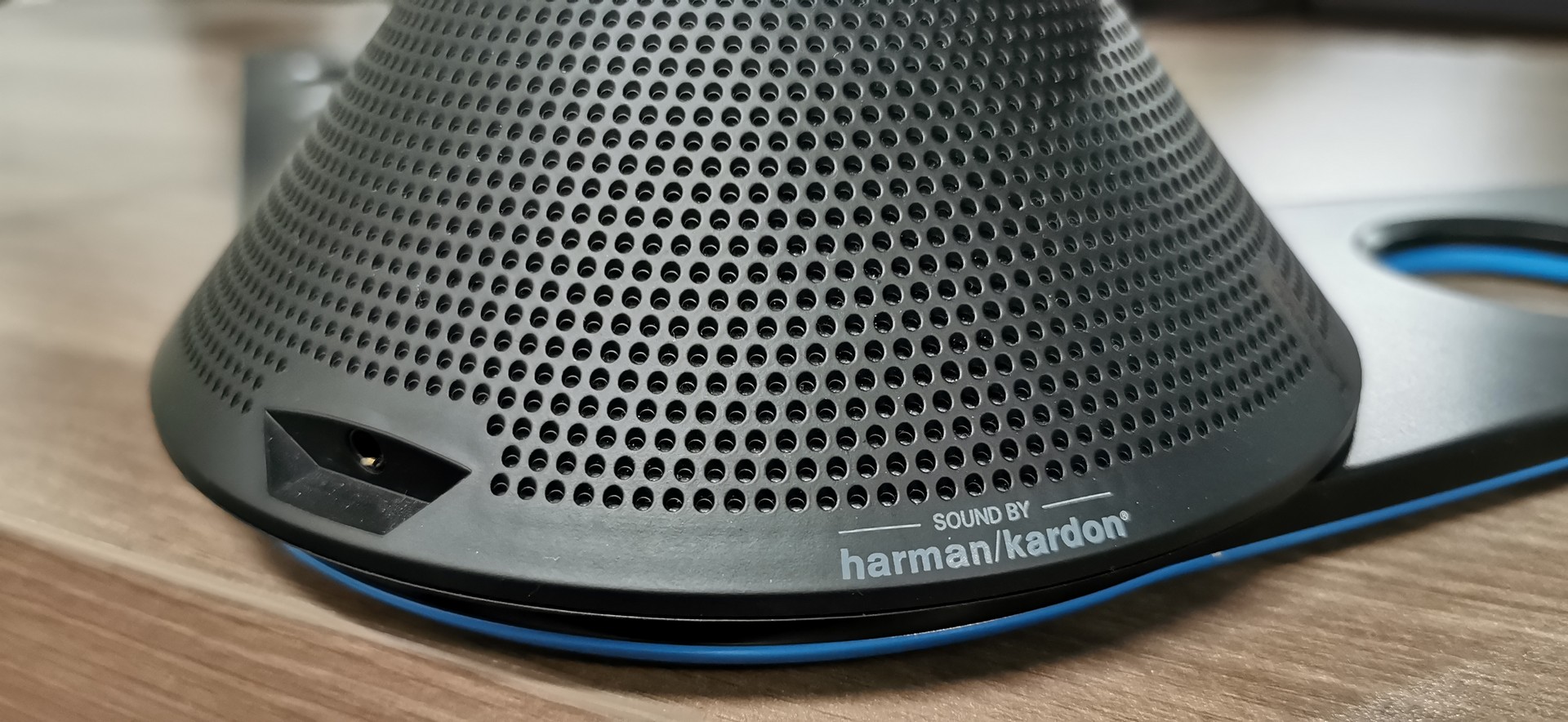
The stand also doubles as a host for the included Harmon Kardon speaker, which you can connect via USB directly into the monitor. An interesting thing to note here is that, while the actual speakers say, “sound by Harmon Kardon”, the official website specifically says that the speakers are “certified” by the audio manufacturers. These are two different distinctions, with the latter meaning that the speakers may not have been developed by Harmon Kardon.
The speakers are quite mediocre. There is little bass to the sound, and tonally it’s quite clear and forward, but they just don’t have the wholesome overall sound quality to be used for any kind of media consumption. They are best for casual audio playback, but if you want to use it for gaming or music, these aren’t an ideal choice.
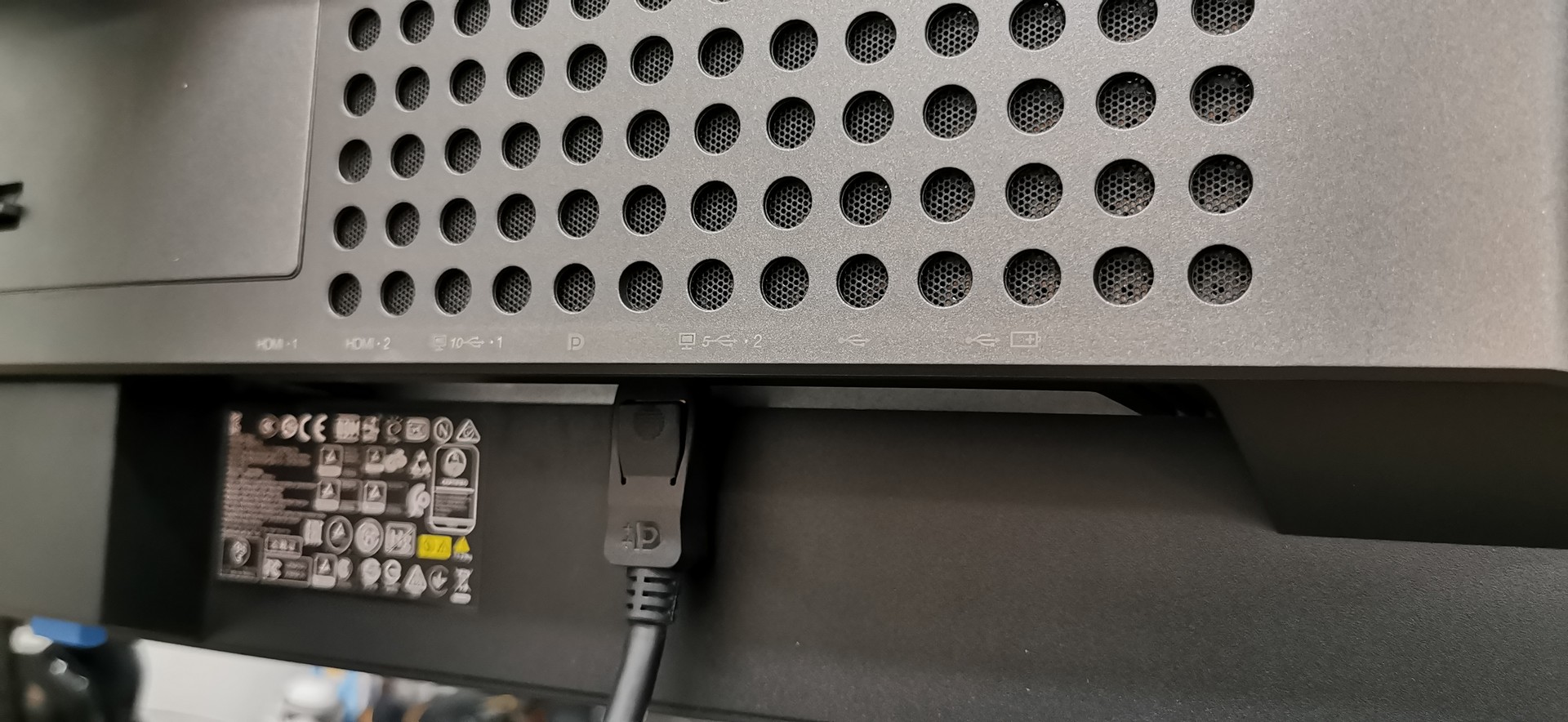
As for the I/O ports, the Y44w-10 packs a plenty. We have 2x HDMI 2.0 ports, a single DisplayPort, 2x USB Type-C ports, and 2x USB 3.0 ports. There is also a pop-out at the front of the screen which houses two USB 2.0 ports and a headphone jack. The mechanism for this pop-out isn’t the smoothest but the convenience of the ports overrides any difficulties using it.
OSD
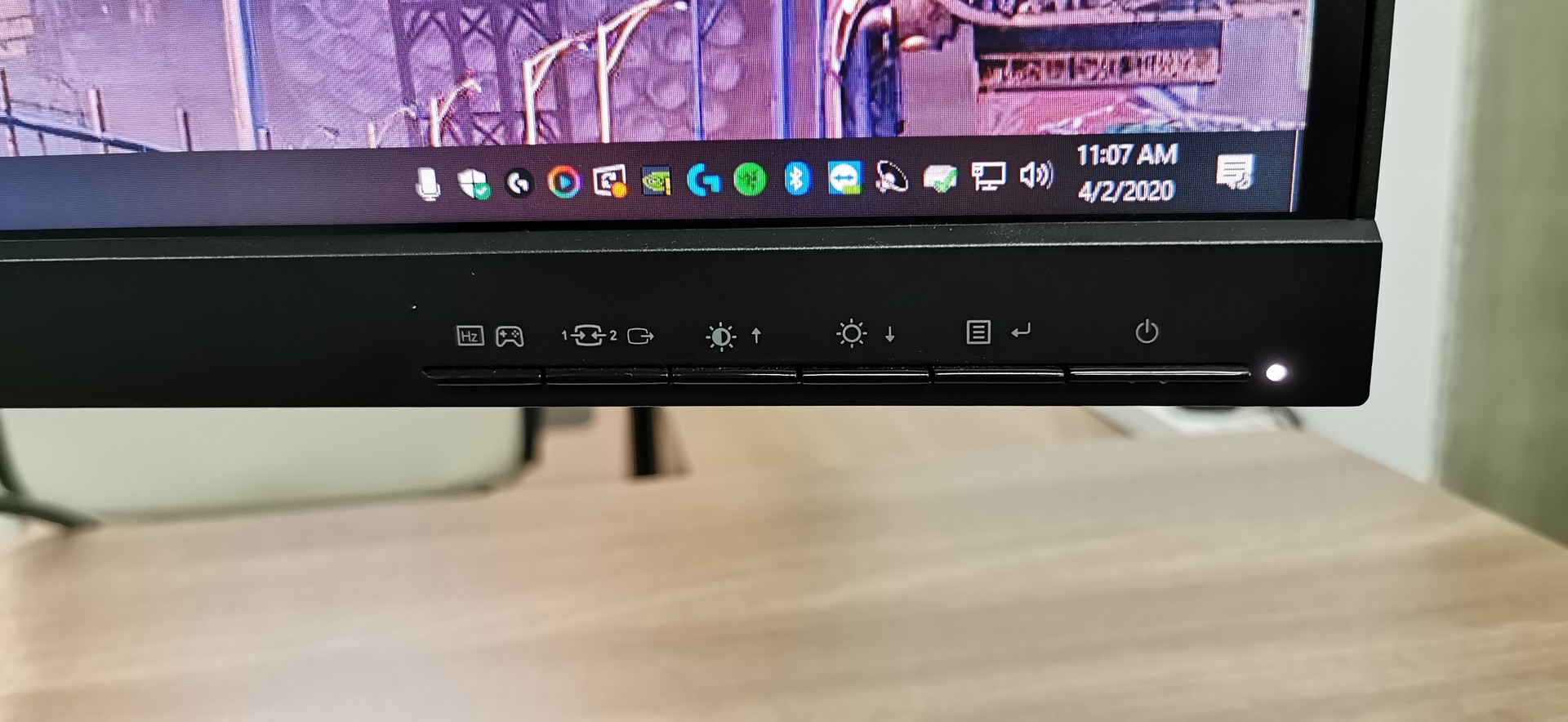
While not as smooth as the ones found on Asus ROG or BenQ monitors, the OSD on the Legion Y44w-10 are intuitive enough after a bit of use. Besides the power buttons, we have five additional clicks with shortcuts to the brightness and most used settings.
The menus are fairly standard and are easily adjustable. You can tinker around with the brightness and colors, chose between different gaming profiles, enable PIP, set power options to the USBs, etc.
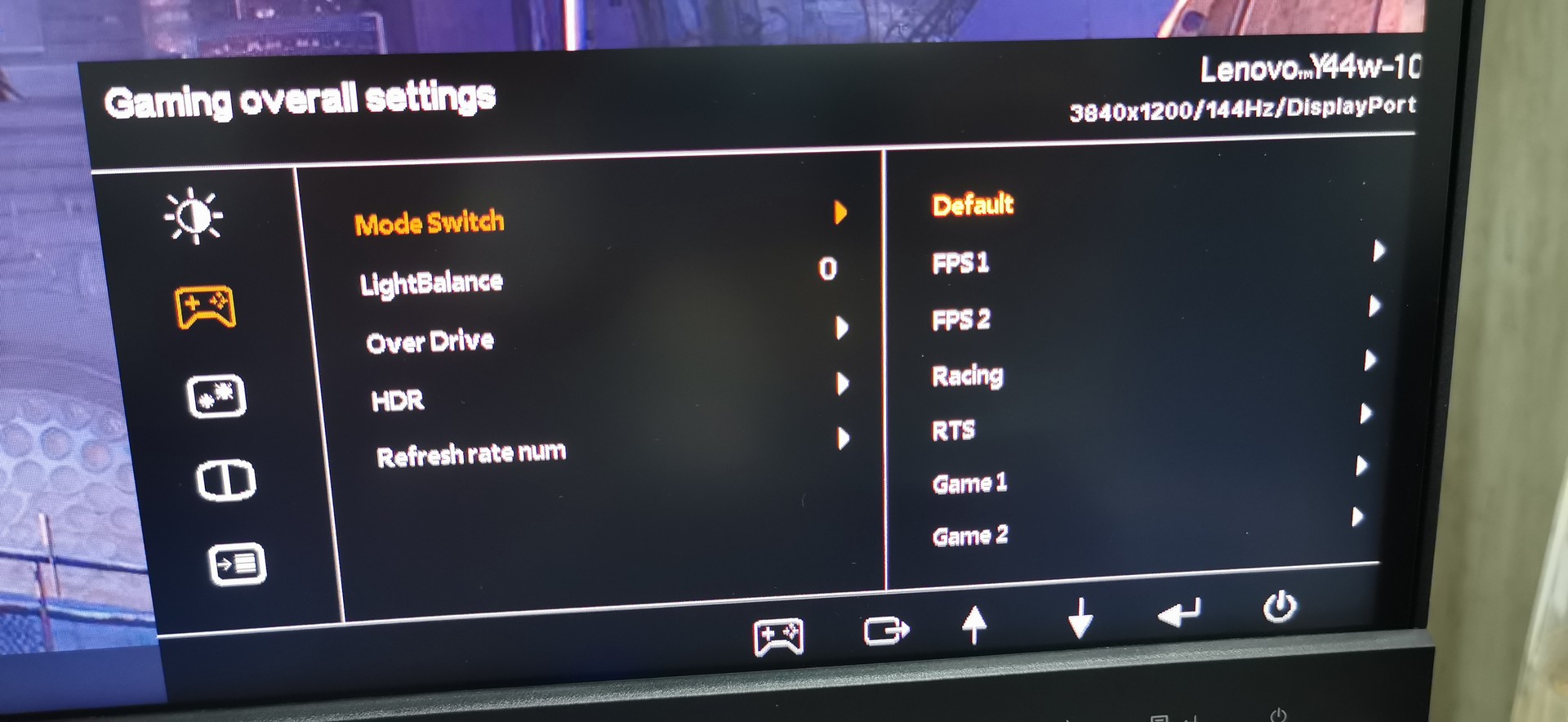
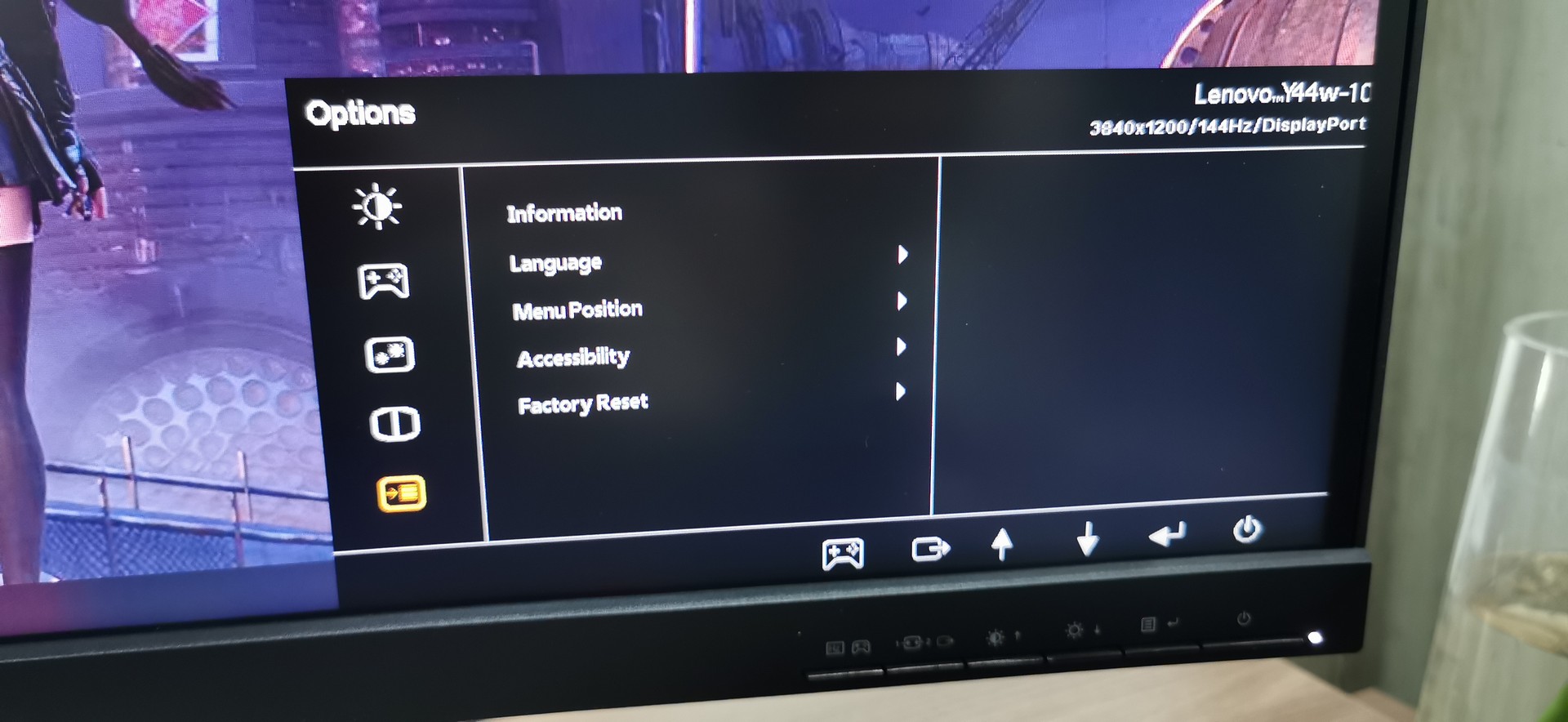
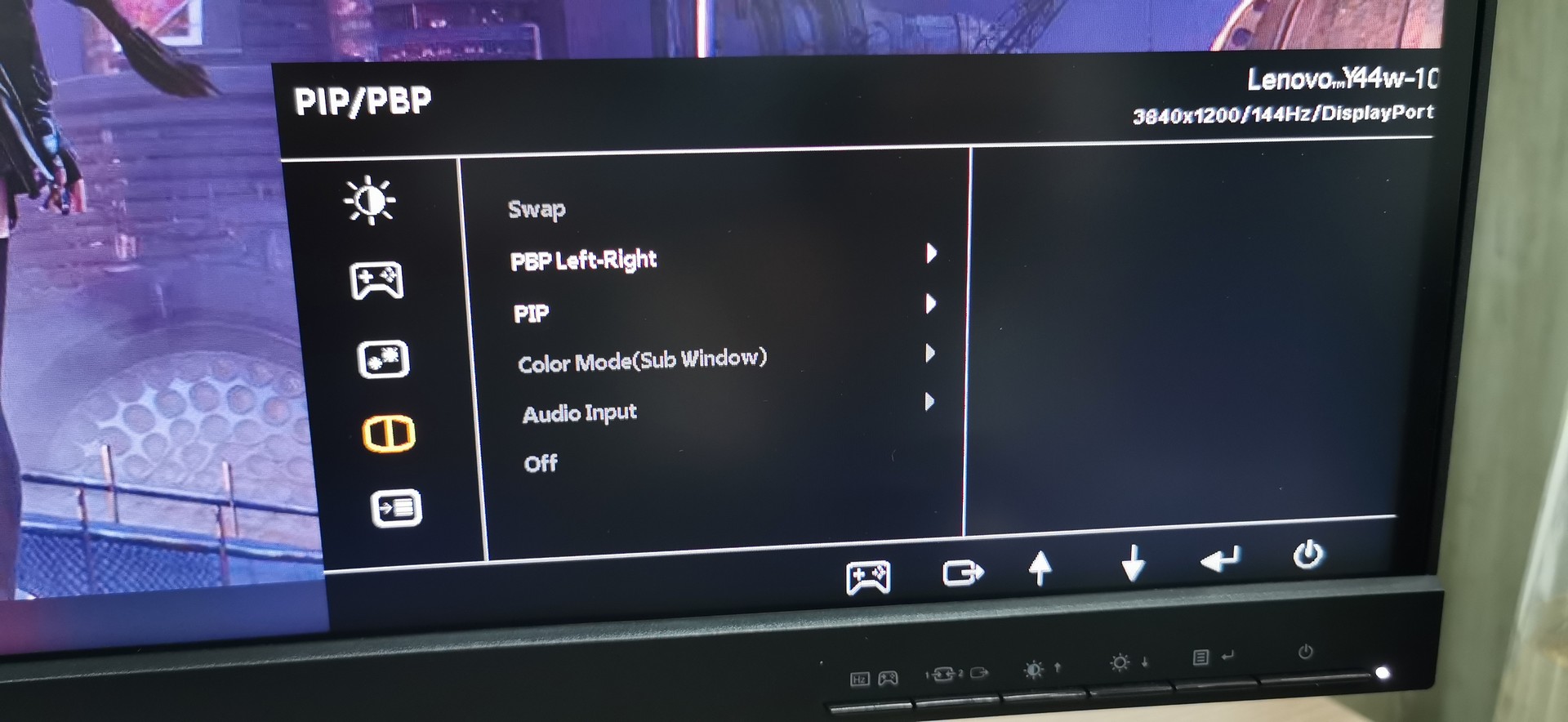
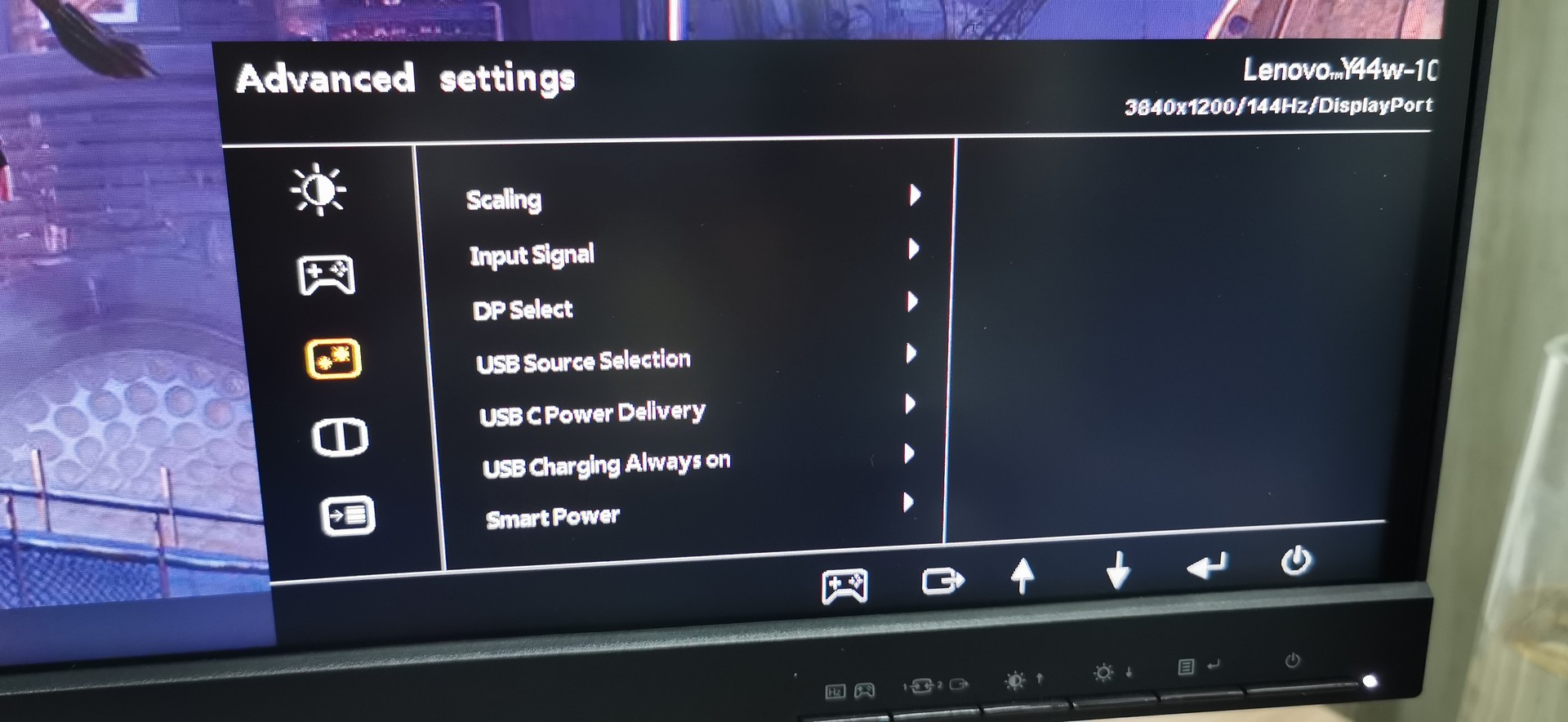
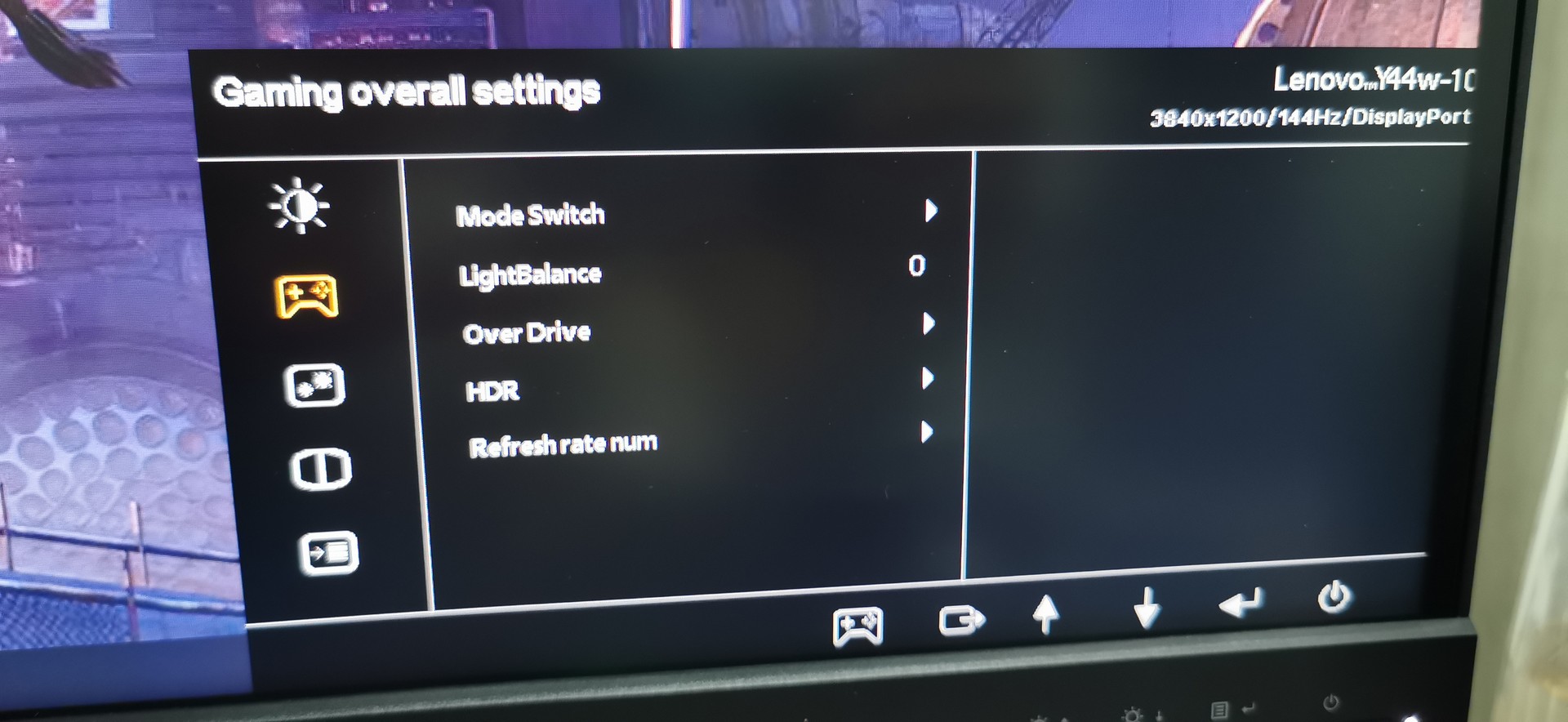
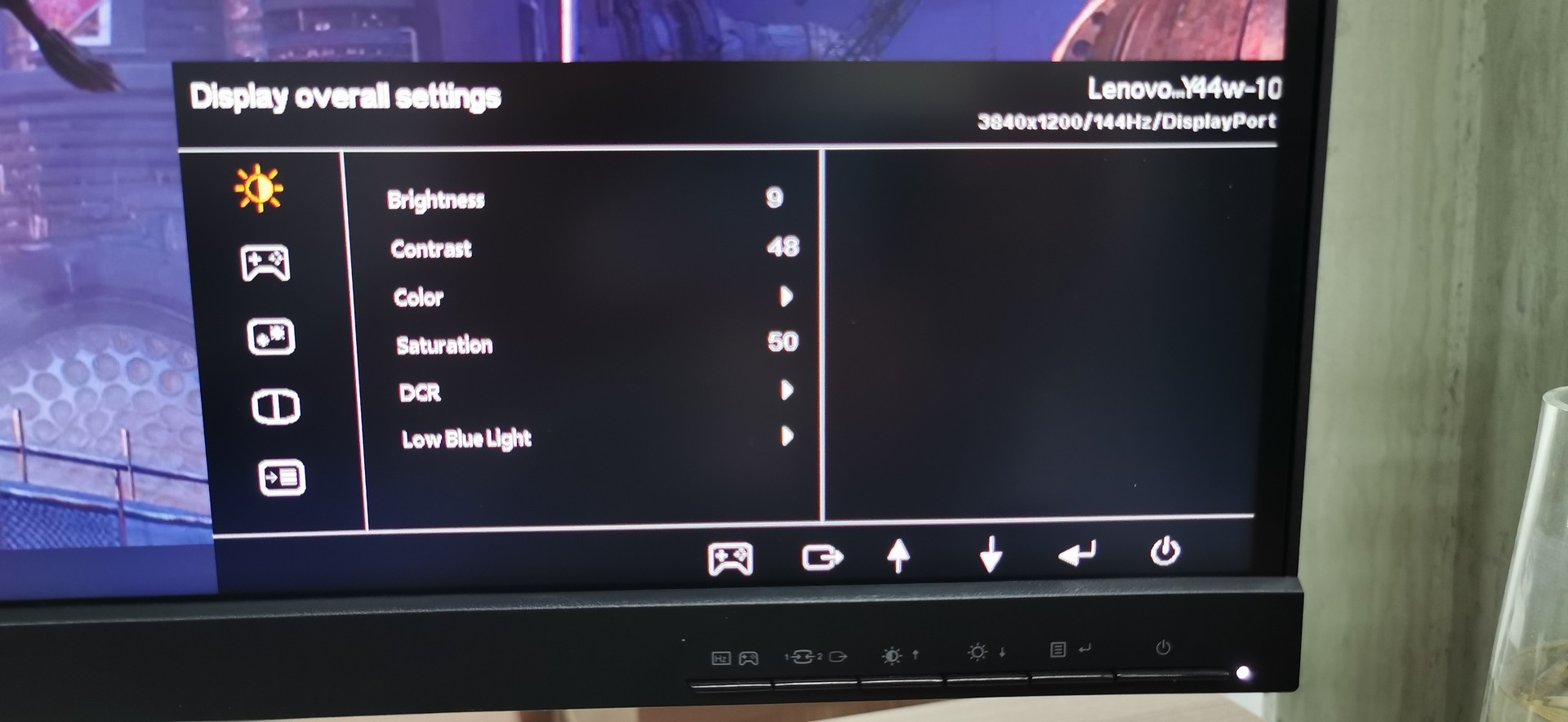
Performance
While most of what we have seen of the Legion Y44w-10 so far has been largely impressive, the performance of the display is where the monitor starts to falter.
While we did not expect the monitor to be as sharp as a 1440p display, the text in particular was quite blurry. The blur is a result of extreme purple fringing around the text, which appears when the sharpness is cranked up too high. We couldn’t find the sharpness option in the OSD menus at all (over both HDMI and DP), which is a strange omission to make, regardless of modern connections not requiring a manual sharpness setting.
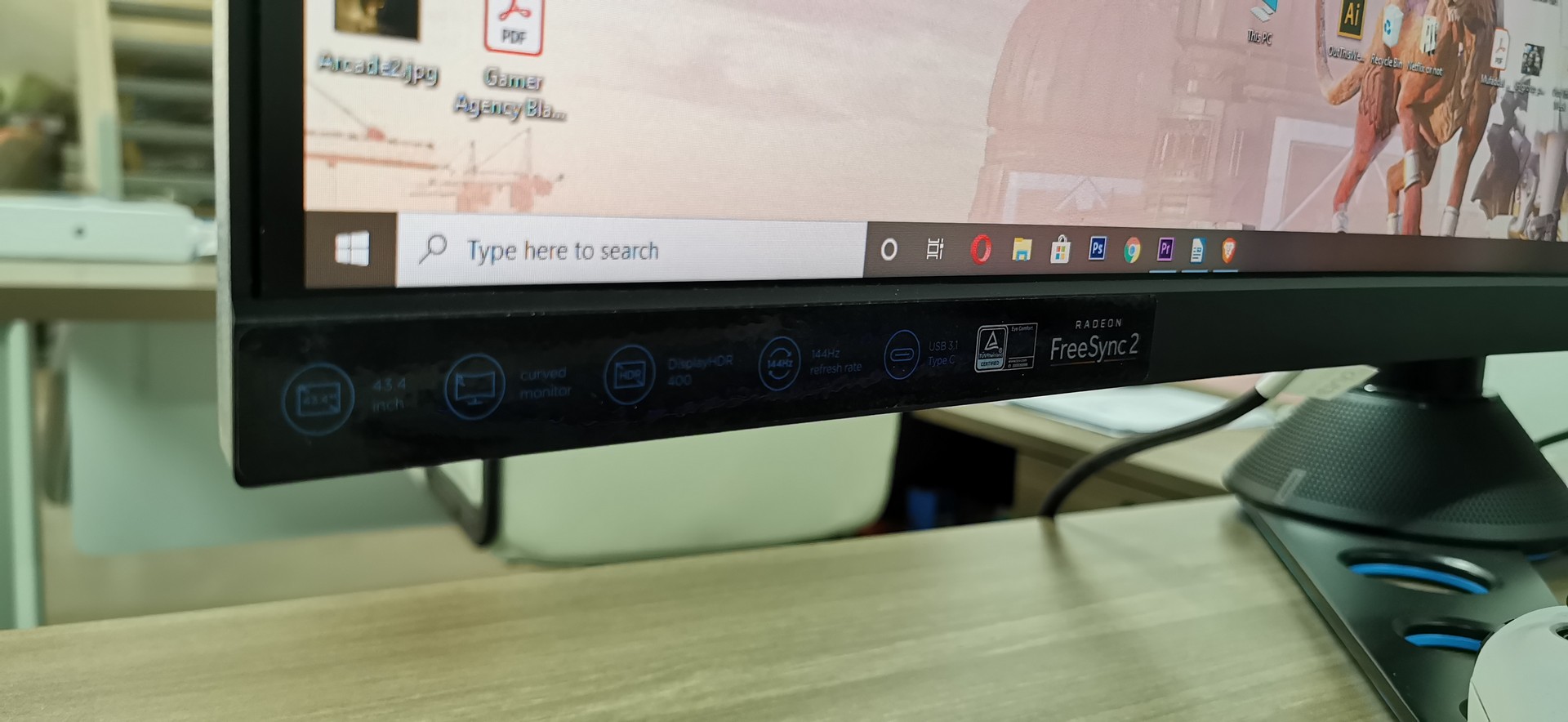
The first few hours of using the monitor was difficult, because the blur would simply cause our eyes to tear up. We did eventually get used to it, but the purple fringing was always noticeable, which was a nuisance while editing text or reading articles. It’s less noticeable during gaming of course, with in-game text and subtitles appearing quite normal.
We were also not impressed by the color accuracy of the screen. It could be due to the fringing issue, but the screen was a tad too warm for our liking, with colors having a reddish hue to them. Calibrating the screen helped root out some of the color issues, with the sRGB mode providing the best color gamut, but the display still wasn’t quite accurate enough.
The colors appeared to be too saturated, and lowering the color/contrast settings simply made it dull. We just couldn’t strike the right balance between brightness, contrast and the colors, despite calibrating it and even using user-posted settings for their own displays.
The Y44w-10 features HDR support, but it’s the bottom end variant which will have very little effect on the overall image quality. The display is HDR400 certified, which is a certification given to displays that meets very few criteria, which in Legion’s case is peak brightness and a 10-bit color depth. It doesn’t feature any form of local dimming so it cannot offer improved dynamic contrast to produce actual HDR results.
To put it bluntly, the HDR on the monitor is simply a buzzword and nothing else. The display does reach a reasonable peak brightness of 520 cd/m2 which is great if you want an extra bit of punch to your image, although the screen’s default 460 cd/m2 offers plenty of that already.
While the Y44w-10 isn’t the fastest tool in the shed, we did not notice any input lag whatsoever, even with HDR enabled. There was a tiny bit of ghosting, but again we couldn’t discern if it was the fringing that was causing the issue. This is barely noticeable in gaming, however.
Playing Overwatch and Warzone was a wild experience, as the widened field of view that you get with an ultra-wide monitor almost felt like an unfair advantage. The extended visuals on the side made it easier to read the map, as well as spot enemies that we would usually miss. The 1800R curve on the monitor is perfect as it tapers to your peripheral vision, so you don’t have to move your head sideways a lot to focus on objects.
The Y44w-10 supports FreeSync 2 and offers Nidia G-sync compatibility with GPU cards that allow it. The product has not been certified by Nvidia themselves, so while G-sync could technically work, it might not be a flawless experience.
Final verdict
At nearly AED 4,800, the Lenovo Legion Y44w-10 is a tough sell. It’s a great looking monitor with excellent build quality and top-end features, but that doesn’t quite result in actual performance. The sub-par panel will require some technical knowledge to get the best out of – something an average user might not possess.
The Y44w-10 is a deep-pocket purchase that doesn’t quite deliver on the value. You’re better off looking elsewhere, such as the larger Asus ROG Strix XG49VQ or the Samsung C43J890, or better yet, two high-end 27” monitors mounted together.
Mufaddal Fakhruddin is an experienced Editor with a demonstrated history of working in the computer games industry. He is skilled in social media, video idea creation and production, media relations, and journalism.
